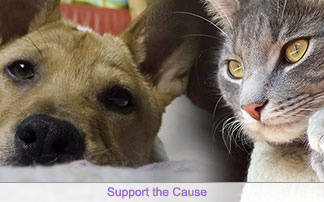I had a beautiful orange male cat named Benjamin. One of my great SPCA finds. It was the first time in my life I got to adopt a kitten. I have always had stray cats that for one reason or another found me.
So with great anticipation off we went to adopt our first 2 kittens. We had just retired and figured we were ready for a new young family. Our cat George that I found at work, had passed on after 20 fun filled years. We waited for almost a year to make sure we were ready for our new family.
To make a long story short, we adopted two precious little ones. We bought them the best of everything especially food or so we thought.
Benjamin was diagnosed with diabetes when he was 8yrs old. I am not totally sure that that expensive top of the line pet food did not contribute to Benjamin's diabetes. For more then 40 years all the pets I ever had from childhood to adulthood were feed just plain old cat food, nothing fancy no cute names in tiny pretty pouches or cans.
Heck when I was growing up at one time we had seven old stray cats. My Grandmother opened up big cans of Puss & Boots and feed them. For the most part they all lived long and healthy lives.
We are lucky now we can look up so much about our pets online and find out what these diseases are and how to treat them. I found these for feline diabetes I hope they can help anyone out there who is going through these health problems with their cat.
Symptoms
Cats will generally show a gradual onset of the disease over a few weeks, and it may escape notice for a while. The condition is unusual in cats less than seven years old. The first obvious symptoms are a sudden weight loss (occasionally gain), accompanied by excessive drinking and urination; for example, cats can appear to develop an obsession with water and lurk around faucets or water bowls. Appetite is suddenly either ravenous (up to three-times normal) or absent. In cats the back legs may become weak and the gait may become stilted or wobbly (peripheral neuropathy). A quick test at this point can be done using urine keto/glucose strips (the same as used on the Atkins diet) with the animal. If the keto/glucose strips show glucose in the urine, diabetes is indicated. If a strip shows ketones in the urine, the animal should be brought to an emergency clinic right away. Testing can also be performed with a home glucose meter by obtaining a blood sample with a lancet via an ear prick or paw prick.
Owners should watch for noticeable thinning of the skin and apparent fragility: these are also serious and indicate that the animal is metabolizing (breaking down) its own body fat and muscle to survive. Lethargy or limpness, and acetone-smelling breath are acute symptoms indicating likely ketoacidosis and/or dehydration and demand emergency care within hours.
Treatment
Diabetes can be treated but is life-threatening if left alone. Early diagnosis and treatment by a qualified veterinarian can help, not only in preventing nerve damage, but in some cases, in cats, can even lead to remission. Cats usually seem to do best with long-lasting insulins and low carbohydrate diets.Diet
Diet is a critical component of treatment, and is in many cases effective on its own. For example, a recent mini-study showed that many diabetic cats stopped needing insulin after changing to a low carbohydrate diet. The rationale is that a low carbohydrate diet reduces the amount of insulin needed and keeps the variation in blood sugar low and easier to predict. Also, fats and proteins are turned into blood glucose much more slowly and evenly than carbohydrates, reducing blood-sugar highs right after mealtimes.Latest veterinary good practice is to recommend a low carbohydrate diet for cats rather than the formerly-recommended high-fiber diet.
It's now becoming clear that lower carbohydrate diets will significantly lower insulin requirements for diabetic cats. Carbohydrate levels are highest in dry cat foods (even the expensive "prescription" types) so cats are best off usually with a low carbohydrate healthy canned diet.Some prescription canned foods made for diabetic cats are effective, but some ordinary ones work just as well. Between 3 and 9% calories from carbohydrates seems to be optimal. You can use the cat food calculator found at http://www.scheyderweb.com/cats/catfood.html to determine the carbohydrates and calories in any cat food, though numbers in American brands are given as minimums and maximums rather than actual estimates, and may be very inaccurate.
I hope it helped. Benjamin only lived to be 13. But I think he may have been a victim of the cat food recall that happened a few years ago. He was on a prescription dry cat food diet, for diabetes and crystals that he got a very early age.
For much more information on pet food and pet care Click Here





No comments:
Post a Comment